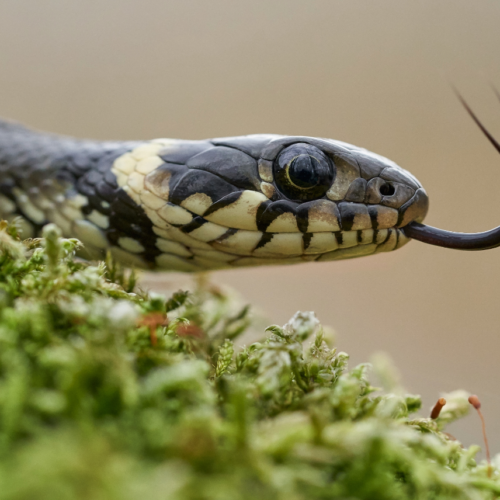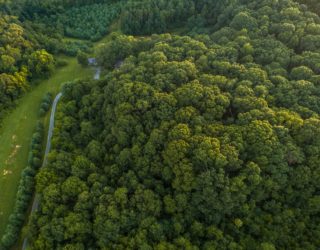In the British Isles, Nathusius’ pipistrelle bat (Pipistrellus nathusii) is relatively rare but widely distributed. It can be found throughout Europe as far east as the border with Turkey, west towards Northern Spain and north towards Finland. Nathusius’ pipistrelle was first seen on the Shetland Isles in 1940 and then later in Ireland in 1996 when a single bat was found grounded in Belfast. The species was initially thought of as a vagrant species with no fixed abode. By 1991, the species was defined as a migrant winter visitor. Mating of this species was later confirmed and three maternity colonies were discovered between 1997 and 2001 in Lincolnshire and Northern Ireland.
The current distribution of Nathusius’ pipistrelle shows it to be relatively widespread, with the highest concentration of calls and sightings in Northern Ireland, the Midlands and the South East. Over 10 maternity and mating roost sites have been located throughout the UK and three hibernacula found in England alone. There have been positive identifications of the species through the use of harp trapping on over six sites.
Its seasonal presence in Europe shows it to have a summer stronghold only in Eastern Europe. Migration leads it west towards Germany, central Europe and Britain where it is present both in the summer and winter months. A second migratory phase takes it south-west towards France and Spain for winter. The mean average distances for male and female migratory Nathusius’ pipistrelles is between 1100 km and 1400 km. In 2013, a single bat ringed in the UK was found 600 km away in the Netherlands. This was the first record of a Nathusius’ pipistrelle flying across the North Sea from the UK to mainland Europe.
Following on from successful surveys carried out from 2009 onwards, the National Nathusius’ Pipistrelle project was launched in 2014. As the migration patterns of European Nathusius’ pipistrelle bat are not well known in the British Isles, this project was set up to answer two fundamental questions: What is the resident and breeding status of Nathusius’ pipistrelle bats in the UK? And, how can we better understand the migratory origins of the Nathusius’ pipistrelle using stable isotope analysis? The answer to these questions could improve our understanding of the ecology and conservation threats present for this species – one of which is mortality from wind turbines in Europe. The project will provide vital information on the migratory origins of this species in the UK, and would allow researchers to assess the potential threat of wind turbines to bat populations in the UK and beyond, at varying geographical scales.
A recent study in the Journal of Biogeography has shown direct evidence to climate change-linked expansion for Nathusius’ pipistrelle bat in the UK. A positive relationship was found between the presence of this species and large waterbodies, woodlands and small areas of urbanisation, and species records were associated with higher minimum temperatures, lower seasonal variation in temperature and intermediate rainfall.
For this reason, suitable areas in the UK have increased, and by 2050, climate change predictions show a likely twofold increase in the habitat available to support this migratory bat.
This study has been cited as being the first to demonstrate a case of distribution change linked to contemporary climate change in a mammal species in Europe at a continental scale. Recent work carried out from 2014 onwards has shown a migratory origin of Nathusius’ pipistrelle bat in the UK from more north easterly and northerly latitudes. Maternity colonies have been discovered in Kent and Northumberland and three recent long distance records have been logged for bats ringed in the UK from Holland, Latvia and Lithuania.
The National Nathusius’ Pipistrelle project is open to everyone including all bat groups, and forms part of the National Bat Monitoring Programme that is undertaken on an annual basis for all British bats. Results will be coming in from a harp trapping study undertaken by the South Yorkshire Bat Group (SYBG) in 2016. The West Yorkshire Bat Group will be collaborating with the SYBG in 2017 to undertake the first study for Nathusius’ pipistrelle bats in the county, with the aim of contributing invaluable information. It is imperative that comprehensive information on the status and distribution of this bat species is obtained and this will be essential in determining future conservation practices for the retention of this species within the UK.











